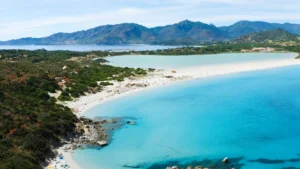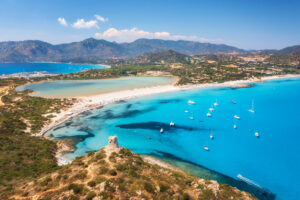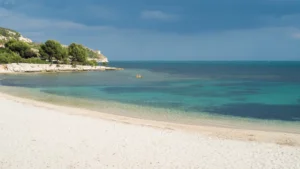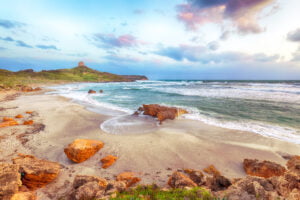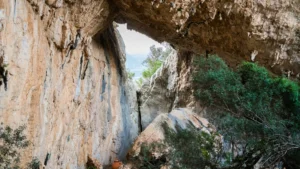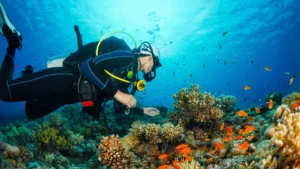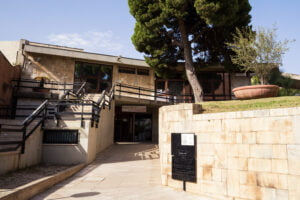Sant’Antioco is a captivating island located off the southwestern coast of Sardinia, Italy. It is the largest island in the Sulcis Archipelago and is renowned for its rich history, diverse cultural heritage, and stunning natural landscapes. Named after Saint Antiochus, a Christian martyr, the island seamlessly blends ancient history with modern-day charm.
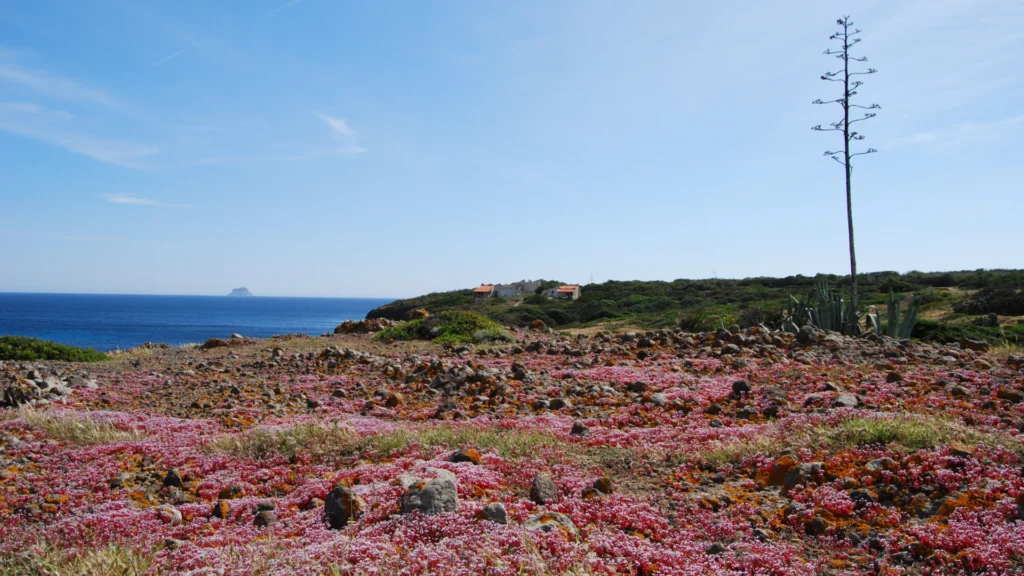
Sant’Antioco holds a unique place in Mediterranean history due to its strategic location and long-standing human settlement.
The island has been inhabited since prehistoric times, as evidenced by the numerous Nuragic ruins. Throughout the centuries, it has been influenced by various civilizations, including the Phoenicians, Carthaginians, and Romans, each leaving a distinct mark on its cultural and architectural heritage.
Sant’Antioco Tours
1. E-bike Tour in the Sant’Antioco Salt Marshes at Sunset
Experience the Magic of the Saltworks at Sunset

Embark on an enchanting E-bike tour through the Saltworks of Sant’Antioco at sunset. Ride the most comfortable Fat E-bikes and explore the vibrant reflections on the salt basins, admire the Greater Flamingos, and dive into the island’s industrial salt harvesting history. Guided by a local expert, this tour offers an unforgettable blend of nature and history.
2. Discover the Secrets of the Island of Sant’Antioco by Kayak
Explore the Coast of Sant’Antioco by Kayak

Discover the hidden gems of Sant’Antioco on a relaxing kayak tour. Paddle through the stunning coastlines, explore secluded coves, and enjoy refreshing swims in crystal-clear waters. Perfect for adventurers, this guided tour ensures a safe and enjoyable experience with all necessary equipment provided.
3. Half Day Guided Dinghy Tour in Sant’Antioco with Souvenir Photos
Sail and Snorkel in Crystal-Clear Waters

Join an exhilarating half-day dinghy tour around Sant’Antioco. With a local skipper guiding the way, explore beautiful hidden coves, snorkel in transparent waters, and capture unforgettable moments with GoPro photos. This luxurious experience offers the perfect mix of relaxation and adventure.
Each of these tours provides a unique way to experience the natural beauty, rich history, and vibrant wildlife of Sant’Antioco. Book your adventure today!
Sant’Antioco Beaches
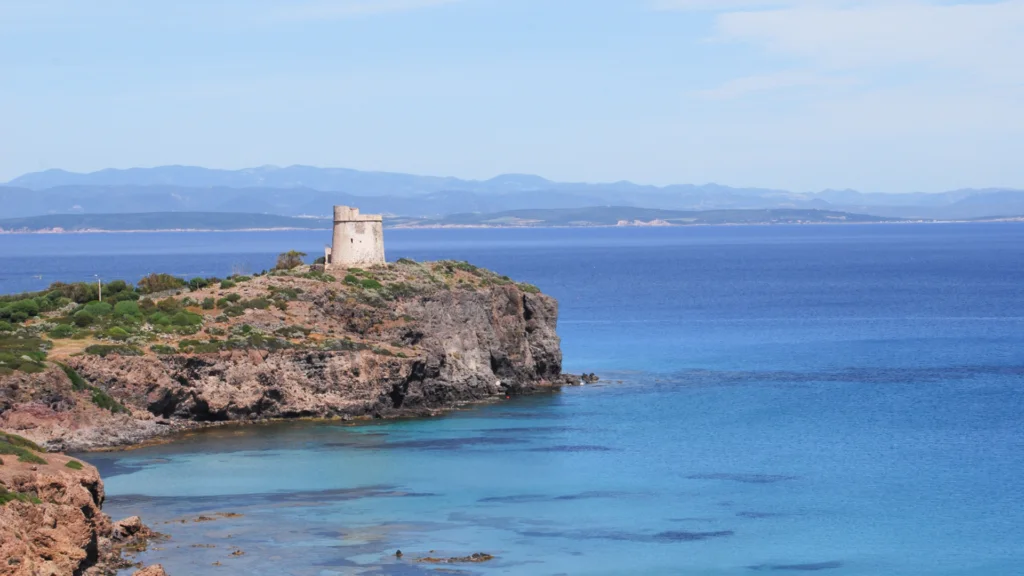
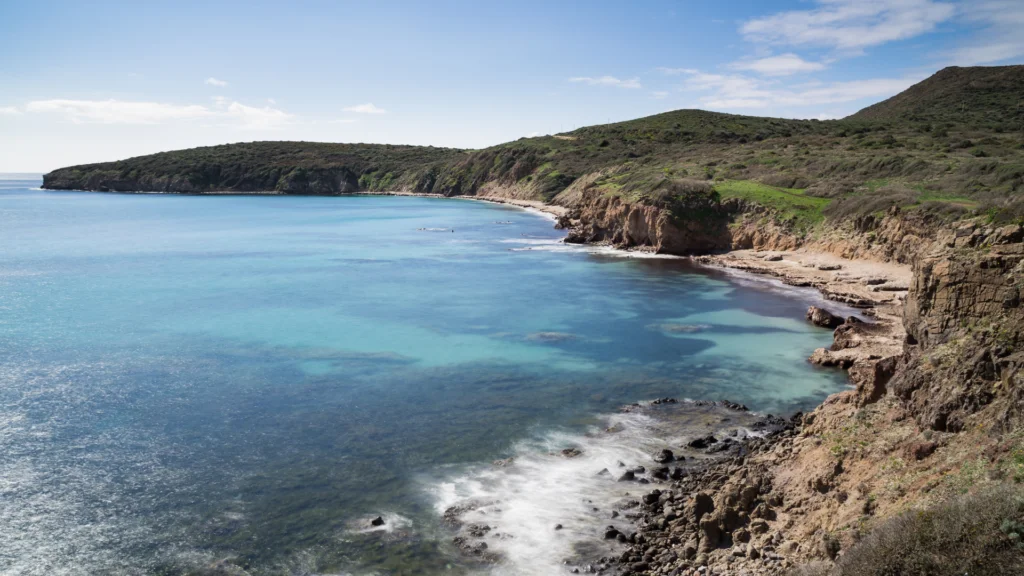
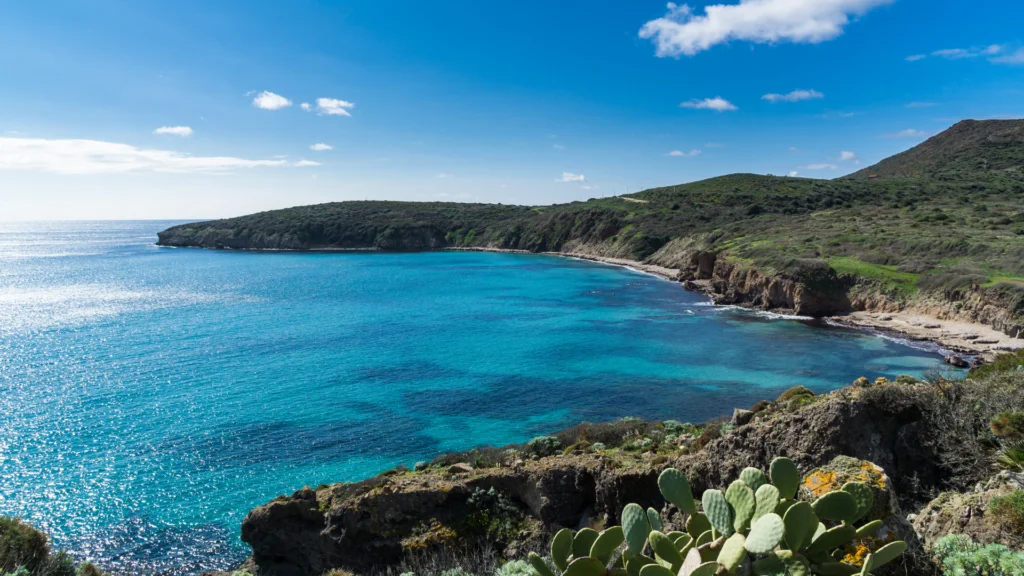
Maladroxia and Portixeddu
These beaches are known for their family-friendly atmosphere and excellent amenities. Both Maladroxia and Portixeddu offer soft, sandy shorelines and clear, shallow waters, making them perfect for families with children.
Activities:
- Swimming: Enjoy the warm, inviting waters ideal for a refreshing swim.
- Sunbathing: Relax on the sandy beaches and soak up the sun.
- Local Eateries: Nearby cafes and restaurants provide delicious local cuisine and refreshments, perfect for a day by the beach.
Coaquaddus
Coaquaddus is a more secluded beach, known for its pristine, crystal-clear waters. It’s an excellent spot for those seeking tranquility and natural beauty away from the more crowded tourist areas.
Activities:
- Relaxation: Enjoy the serene environment, perfect for unwinding and escaping the hustle and bustle.
- Snorkeling: Explore the underwater world with excellent visibility and a variety of marine life.
Cala Sapone
Cala Sapone is a picturesque bay that can be reached by a scenic hike. Its unique landscape and stunning views make it a favorite among nature lovers and hikers.
Activities:
- Hiking: Enjoy a scenic hike to the bay, with beautiful views along the way.
- Swimming: The clear waters are perfect for a refreshing swim.
- Scenic Views: Take in the breathtaking scenery of the bay and its surroundings.
Cala Lunga
Cala Lunga is a long, narrow inlet with strikingly turquoise waters. This beach is perfect for those looking to explore and engage in water-based activities.
Activities:
- Kayaking: Paddle through the calm, turquoise waters and explore the coastline.
- Exploring Sea Caves: Discover the hidden sea caves along the inlet, adding an element of adventure to your visit.
The Best Places To Visit In Sant’Antioco
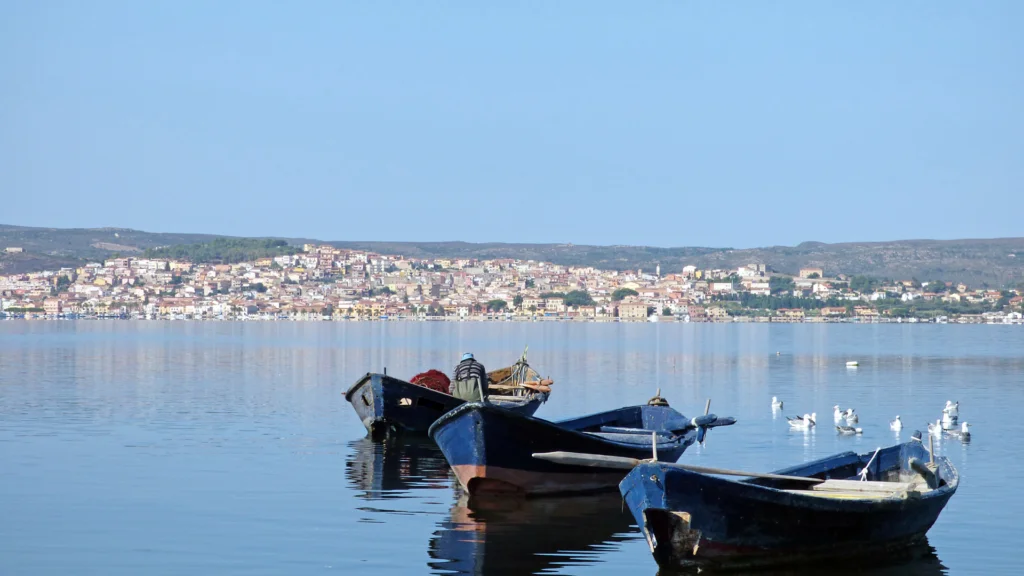
Nuragic Ruins, Domus de Janas, and Giants’ Tombs
These ancient sites offer a glimpse into the island’s early history and the lives of its prehistoric inhabitants. The Nuragic ruins, Domus de Janas (houses of the fairies), and Giants’ Tombs are key archaeological features that showcase the island’s rich past.
Key Sites:
- Giants’ Tombs in Corona de su Crabi: These monumental grave sites date back to the Nuragic civilization and are characterized by their large stone structures.
- Gruttiacqua Nuraghe: A significant Nuragic tower, indicative of the island’s ancient architectural prowess and communal living.
Punic and Roman Ruins
Sant’Antioco is home to several archaeological sites from the Punic and Roman periods, reflecting the island’s historical significance and its role in ancient Mediterranean trade and culture.
Key Sites:
- Punic Necropolis: This extensive burial ground contains numerous tombs and artifacts from the Carthaginian period, offering insights into the funerary practices and daily life of the era.
- Roman Fountain: Located in Piazza Italia, this fountain is a remnant of the Roman infrastructure that once served the island, showcasing advanced engineering and urban planning.
Basilica di Sant’Antioco Martire Catacombs
The Basilica di Sant’Antioco Martire, dating back to the 5th century, is a prominent religious site with deep historical roots. The basilica is renowned for its underground catacombs, which are believed to house the remains of Saint Antiochus.
Significance:
The basilica is not only an architectural marvel but also a place of great religious importance. It attracts pilgrims and tourists alike, who come to pay their respects and explore the historical catacombs.
Savoy “Su Pisu” Fort
Constructed in the 18th century, the Savoy “Su Pisu” Fort is a defensive structure that played a crucial role in protecting the island from invasions and pirate attacks.
Historical Role:
The fortification highlights the strategic military significance of Sant’Antioco throughout history. It stands as a testament to the island’s efforts to safeguard its inhabitants and resources during tumultuous periods.
Sant’Antioco Museums
Ethnographic Museum
Description: This museum provides an in-depth look at the local culture, traditional crafts, and agricultural practices that have shaped the island’s history. It offers visitors a chance to understand the daily life and heritage of the island’s inhabitants.
Archaeological Museum
Description: Housing artifacts and exhibits from various ancient civilizations, this museum showcases the island’s rich historical tapestry. Visitors can explore items from the Nuragic, Phoenician, Carthaginian, and Roman periods, gaining insight into the island’s archaeological significance.
Byssus Museum-Lab
Description: Unique to Sant’Antioco, this museum-lab is dedicated to the ancient art of weaving byssus, a rare and valuable sea silk. Chiara Vigo, the last known master of this craft, demonstrates the intricate process, making this a must-visit for those interested in traditional crafts and unique textiles.
Calasetta
Calasetta is a picturesque village known for its vibrant culture and beautiful scenery. The village offers a charming blend of local traditions and modern attractions.
Attractions:
- Local Restaurants: Enjoy delicious Sardinian cuisine, including fresh seafood and traditional dishes.
- Stunning Beaches: Relax on the sandy shores and enjoy the clear blue waters that surround the village.
Capo Sperone
Located at the southernmost point of Sant’Antioco, Capo Sperone is renowned for its breathtaking scenic views and natural beauty.
Attractions:
- Scenic Views: Panoramic vistas of the surrounding sea and coastline make it a popular spot for photography.
- Hiking: Ideal for outdoor enthusiasts, offering trails that lead to stunning viewpoints.
Arco dei Baci
This natural rock arch formation is a striking geological feature on the island, attracting visitors for its unique shape and beauty.
Activities:
- Photography: The dramatic arch provides a perfect backdrop for memorable photos.
- Scenic Walks: Enjoy leisurely walks around the area, taking in the natural beauty and serene atmosphere.
Best Places to Stay in Sant’Antioco
Lu’ Hotel Maladroxia Sant’Antioco
Situated near the beautiful Maladroxia Beach, this hotel offers stunning views and luxurious amenities, making it ideal for a beachside getaway.
B&B Guest House Isola Antica Sant’Antioco
This charming B&B provides a cozy and welcoming atmosphere. It’s perfect for those seeking a more intimate and personal lodging experience, with close proximity to local sights and eateries.
Montellino’s Bed and Breakfast
Known for its exceptional service and comfortable accommodations, Montellino’s Bed and Breakfast is a top choice for visitors looking to relax and enjoy the local hospitality.
Bed & Breakfast Il Melangolo
This B&B provides a comfortable and affordable option for travelers, featuring homey accommodations and a friendly atmosphere.
B&B Le Terrazze Isola di Sant’Antioco
With its high ratings and excellent service, B&B Le Terrazze offers a delightful stay with panoramic views from its terraces, making it a serene choice for visitors.
Hotel Del Corso
Hotel Del Corso combines modern comforts with a central location. Guests can enjoy easy access to local attractions, dining, and shopping.
Hotel Solki
Located in the heart of Sant’Antioco, Hotel Solki offers a convenient and comfortable stay with modern amenities. It’s an excellent choice for travelers looking to explore the town and nearby attractions.
Where is Sant’Antioco located?
Sant’Antioco is located in southwestern Sardinia, in the Province of South Sardinia. It is the name of both an island and a municipality (comune).
The island of Sant’Antioco is the second largest island of the Sardinian region, after Sardinia itself, with a surface area of 109 km2. It is located some 87 km from Cagliari, to which it is connected through the SS126 state road, using a modern bridge.
The island is divided between the two municipalities of Sant’Antioco and Calasetta. The municipality of Sant’Antioco is the island’s largest community.
How to Get to Sant’Antioco
- If you are traveling from Cagliari, the capital of Sardinia, you can reach Sant’Antioco by taking the S.S. 130 and then the S.S. 126. This journey will take you through the natural beauty of Sardinia, offering you the chance to admire its charming countryside and spectacular coasts.
- If you are traveling from other parts of Sardinia, you will first need to take the S.S. 131 towards Cagliari, and then follow the S.S. 130 and subsequently the S.S. 126 to Sant’Antioco. This route will give you the opportunity to explore different parts of the island and enjoy its varied and fascinating landscapes.
- Public Transportation: Regular bus services run from Cagliari to Sant’Antioco, with stops in several towns along the way. The journey by bus takes approximately 2 hours. Alternatively, you can take a train from Cagliari to Carbonia, followed by a short bus ride to Sant’Antioco.
For those arriving in Sardinia by plane or by ship, the Island of Sant’Antioco is easily reachable from the airport or port of Cagliari. From the airport, you can take a taxi or a bus to Cagliari and from there follow the road signs to Sant’Antioco.
If you are on the Island of San Pietro, another beautiful island of Sardinia, you can reach Sant’Antioco by ferry. This short sea trip will offer you a spectacular view of the two islands and the crystal-clear sea that surrounds them.
Arriving in Sant’Antioco will be the beginning of an unforgettable holiday, full of discoveries and adventures. So get ready to enjoy the journey as much as the destination.
Sant’Antioco Weather
A Short History Of Sant’Antioco
Overview of the island’s ancient history
Sant’Antioco, the largest island in the Sulcis Archipelago off the southwestern coast of Sardinia, boasts a rich and diverse history that spans several millennia. Its strategic location in the Mediterranean has made it a coveted site for various civilizations throughout history. The island’s name is derived from Saint Antiochus, a Christian martyr whose influence remains significant in the area.
Key historical events and their significance
- Nuragic Civilization (1800-500 BCE)
- The earliest known inhabitants of Sant’Antioco were the Nuragic people, whose presence is evidenced by the nuraghe (megalithic towers) scattered across the island. These structures served both defensive and communal purposes, marking the island’s early significance as a hub of local culture and community.
- Phoenician and Carthaginian Periods (9th-3rd centuries BCE)
- Around the 9th century BCE, Phoenician settlers established a trading post on the island, known as Sulky. This site grew into an important commercial center due to its advantageous position along Mediterranean trade routes. The island later came under Carthaginian control, further enhancing its role in regional trade networks.
- Roman Conquest and Era (3rd century BCE – 5th century CE)
- The island was conquered by the Romans in the 3rd century BCE, becoming part of the Roman Empire. The Romans developed infrastructure, including roads, aqueducts, and buildings. Notably, the Roman influence is visible in the island’s archaeological sites, such as the Tophet, a Carthaginian-Phoenician cemetery, and the Roman Fountain in Piazza Italia.
- Christian Influence and the Middle Ages (4th-15th centuries)
- Christianity spread to Sant’Antioco during the late Roman period. Saint Antiochus, a Christian martyr, was said to have been buried on the island, giving rise to the construction of the Basilica di Sant’Antioco Martire. During the Middle Ages, the island experienced various occupations, including Byzantine and Spanish influences, each leaving their mark on the island’s cultural and architectural landscape.
Influence of various civilizations: Nuragic, Phoenician, Carthaginian, Roman
- Nuragic Civilization: The Nuragic people are known for their construction of nuraghe, which are still prominent on the island. These structures indicate a well-organized society with advanced construction techniques and a strong communal spirit.
- Phoenician and Carthaginian Influence: The Phoenicians established Sulky as a major trading hub, introducing advanced maritime trade practices and cultural exchanges. The Carthaginians further developed the island’s economy and infrastructure, integrating it into a broader network of Mediterranean trade.
- Roman Era: Under Roman rule, the island saw significant development in terms of infrastructure, urban planning, and architecture. The influence of Roman culture is evident in the ruins of buildings, roads, and public works that have been excavated on the island.
- Christianity and the Middle Ages: The spread of Christianity brought new religious and cultural practices to the island. The construction of churches and monasteries, such as the Basilica di Sant’Antioco Martire, underscored the island’s continuing significance as a religious center throughout the medieval period.
The diverse historical layers of Sant’Antioco reflect its strategic importance and rich cultural heritage, making it a fascinating destination for those interested in ancient civilizations and Mediterranean history.

